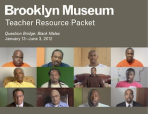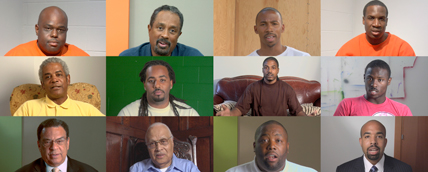
Chris Johnson (American, b. 1948) and Hank Willis Thomas (American, b. 1976), with Kamal Sinclair (American, b. 1976) and Bayeté Ross Smith (American, b. 1976). Stills from Question Bridge: Black Males, 2012. Multichannel video installation. Courtesy of the artists and Jack Shainman Gallery, New York

Chris Johnson (American, b. 1948) and Hank Willis Thomas (American, b. 1976), with Kamal Sinclair (American, b. 1976) and Bayeté Ross Smith (American, b. 1976). Stills from Question Bridge: Black Males, 2012. Multichannel video installation. Courtesy of the artists and Jack Shainman Gallery, New York
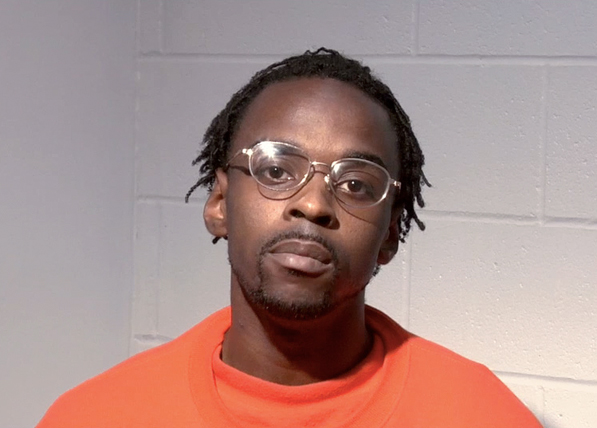
Chris Johnson (American, b. 1948) and Hank Willis Thomas (American, b. 1976), with Kamal Sinclair (American, b. 1976) and Bayeté Ross Smith (American, b. 1976). Still from Question Bridge: Black Males (Vonteak Alexander, San Francisco County Jail), 2011. Multichannel video installation. Courtesy of the artists and Jack Shainman Gallery, New York
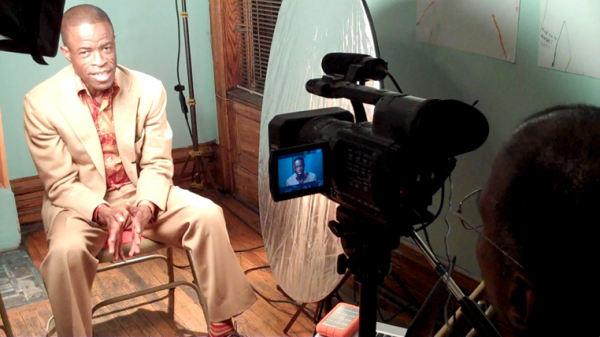
Chris Johnson (American, b. 1948) and Hank Willis Thomas (American, b. 1976), with Kamal Sinclair (American, b. 1976) and Bayeté Ross Smith (American, b. 1976). Still from Question Bridge B-Roll 2, 2011. Courtesy of the artists and Jack Shainman Gallery, New York
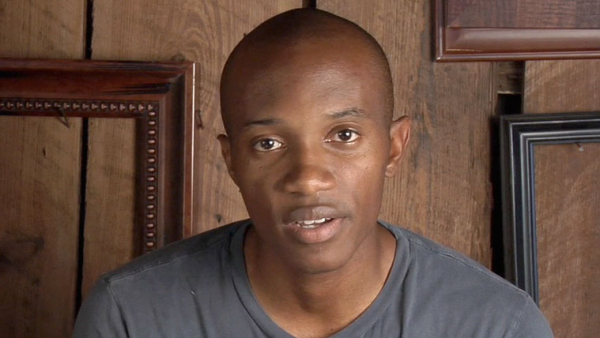
Chris Johnson (American, b. 1948) and Hank Willis Thomas (American, b. 1976), with Kamal Sinclair (American, b. 1976) and Bayeté Ross Smith (American, b. 1976). Still from Question Bridge: Black Males (Darran Simon, New Orleans), 2011. Multichannel video installation. Courtesy of the artists and Jack Shainman Gallery, New York
Question Bridge: Black Males
January 13–July 15, 2012
Question Bridge: Black Males is an innovative video installation created by artists Hank Willis Thomas and Chris Johnson in collaboration with Bayeté Ross Smith and Kamal Sinclair. The four collaborators spent several years traveling throughout the United States, speaking with 150 Black men living in 12 American cities and towns, including New York, Chicago, Oakland, Birmingham, and New Orleans. From these interviews they created 1,500 video exchanges in which the subjects, representing a range of geographic, generational, economic, and educational strata, serve as both interviewers and interviewees. Their words were woven together to simulate a stream-of-consciousness dialogue, through which important themes and issues emerge, including family, love, interracial relationships, community, education, violence, and the past, present, and future of Black men in American society.
The exhibition includes multiple screens playing videos of the interviews, edited so that it appears as if the men are having a conversation. The artists hope that the Question Bridge project will be a catalyst for constructive dialogue that will help deconstruct stereotypes about Black male identity in our collective consciousness. Museum visitors are also invited to visit the user-generated Question Bridge website, accessible on iPads throughout the gallery, which offers a platform to represent and redefine Black male identity in America.
The Brooklyn Museum presentation of Question Bridge: Black Males is co-organized by Patrick Amsellem, former Associate Curator of Photography, and Tricia Laughlin Bloom, Project Curator, Brooklyn Museum.
The Question Bridge executive producers are Delroy Lindo, Deborah Willis, and Jesse Williams. Will Sylvester is the Post-Production Producer, and Rosa White is the Supervising Story Producer. The Transmedia Producers are Antonio Kaplan and Elise Baugh of Innovent.
Question Bridge: Black Males is a fiscally sponsored project of the Bay Area Video Coalition, supported in part by a grant from the Open Society Foundations Campaign for Black Male Achievement, the Tribeca Film Institute, Sundance Film Institute’s New Frontier Story Lab, the LEF Foundation, the Center for Cultural Innovation, and the California College of the Arts. Additional support was provided by the Jack Shainman Gallery.
